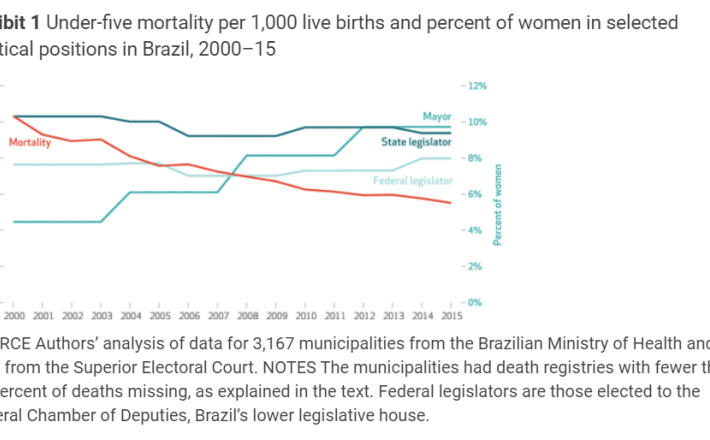Increases in women’s political representation associated with reductions in child mortality in Brazil
Source: Health affairs
We assessed the effects of female political representation on mortality among children younger than age five in Brazil and the extent to which this effect operates through coverage with conditional cash transfers and primary care services. We combined data on under-five mortality rates with data on women elected as mayors or representatives in state and federal legislatures for 3,167 municipalities during 2000–15. Results from fixed-effects regression models suggest that the election of a female mayor and increases in the shares of women elected to state legislatures and to the federal Chamber of Deputies to 20 percent or more were significantly associated with declines in under-five mortality. Increasing the political representation of women was likely associated with beneficial effects on child mortality through pathways that expanded access to primary health care and conditional cash transfer programs.
Click here to read the full article published by Health Affairs on 6 November 2020.

We assessed the effects of female political representation on mortality among children younger than age five in Brazil and the extent to which this effect operates through coverage with conditional cash transfers and primary care services. We combined data on under-five mortality rates with data on women elected as mayors or representatives in state and federal legislatures for 3,167 municipalities during 2000–15. Results from fixed-effects regression models suggest that the election of a female mayor and increases in the shares of women elected to state legislatures and to the federal Chamber of Deputies to 20 percent or more were significantly associated with declines in under-five mortality. Increasing the political representation of women was likely associated with beneficial effects on child mortality through pathways that expanded access to primary health care and conditional cash transfer programs.
Click here to read the full article published by Health Affairs on 6 November 2020.